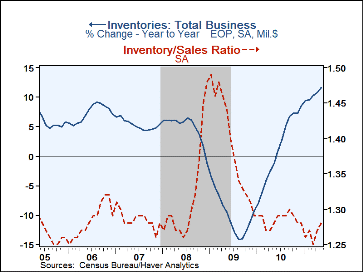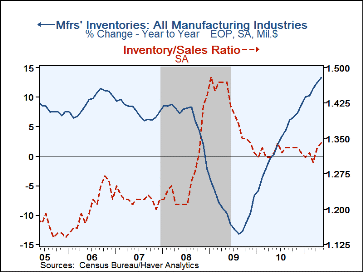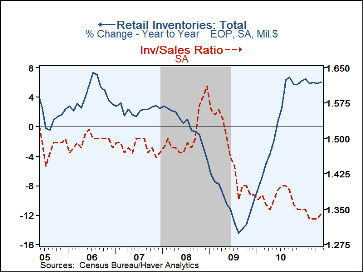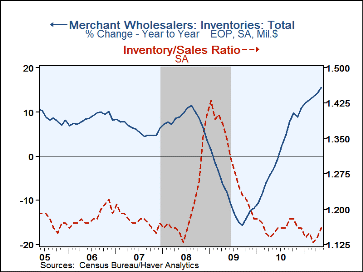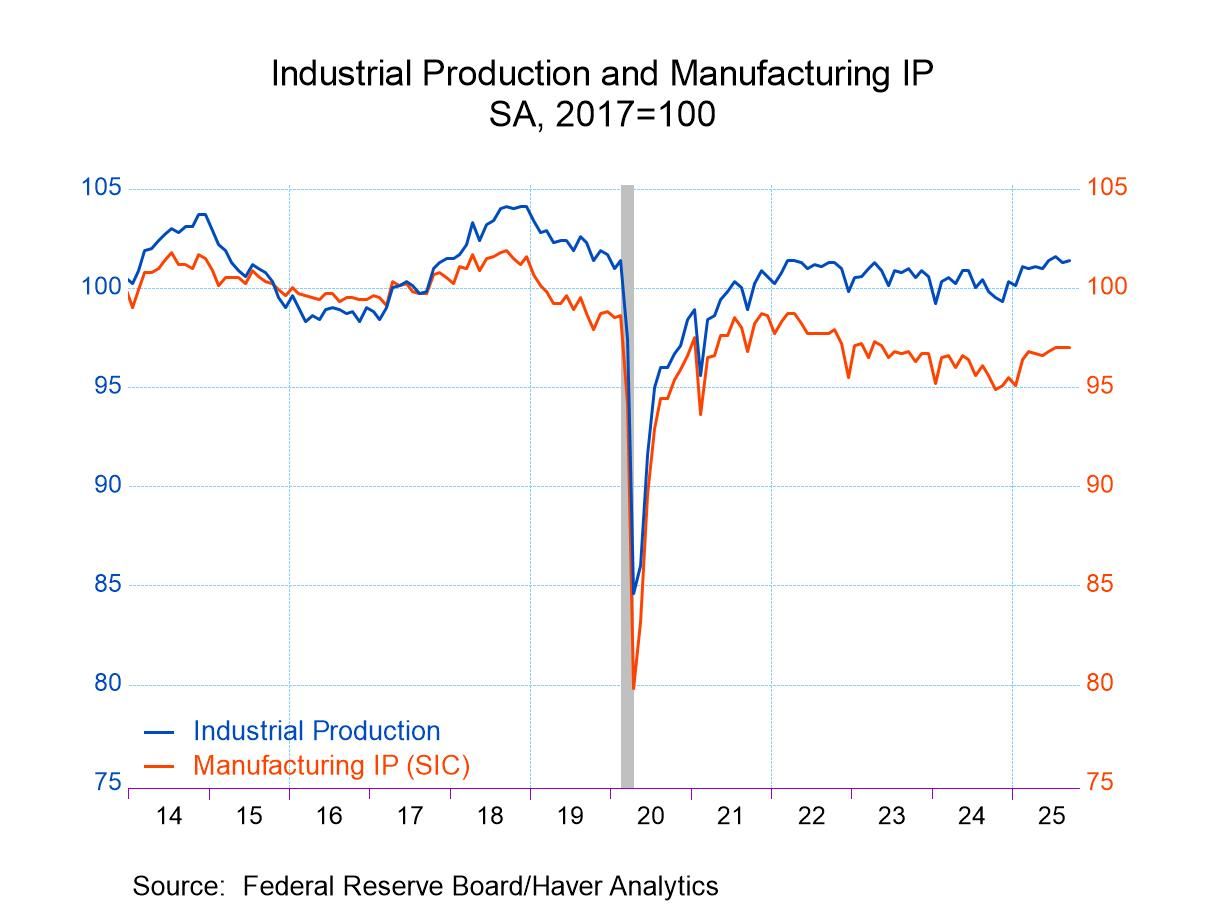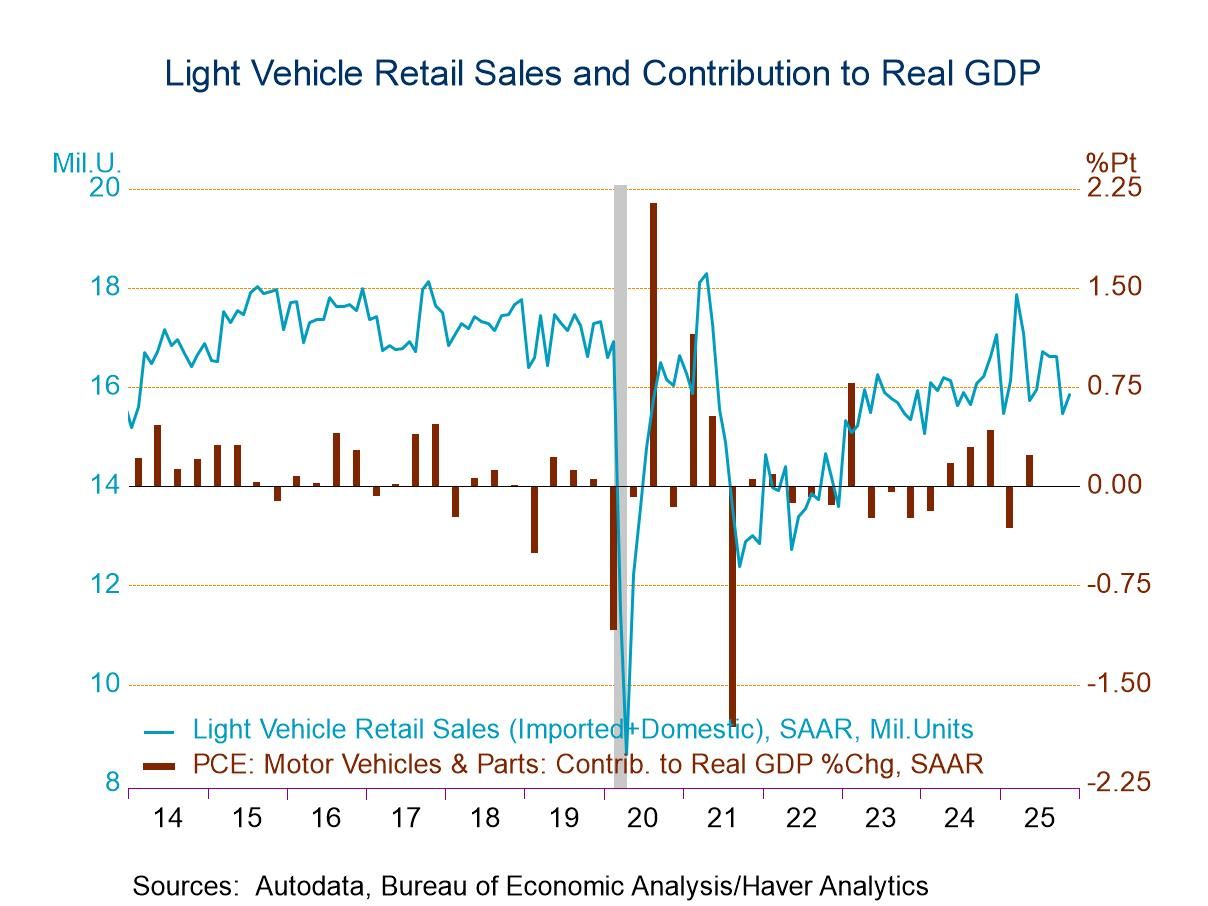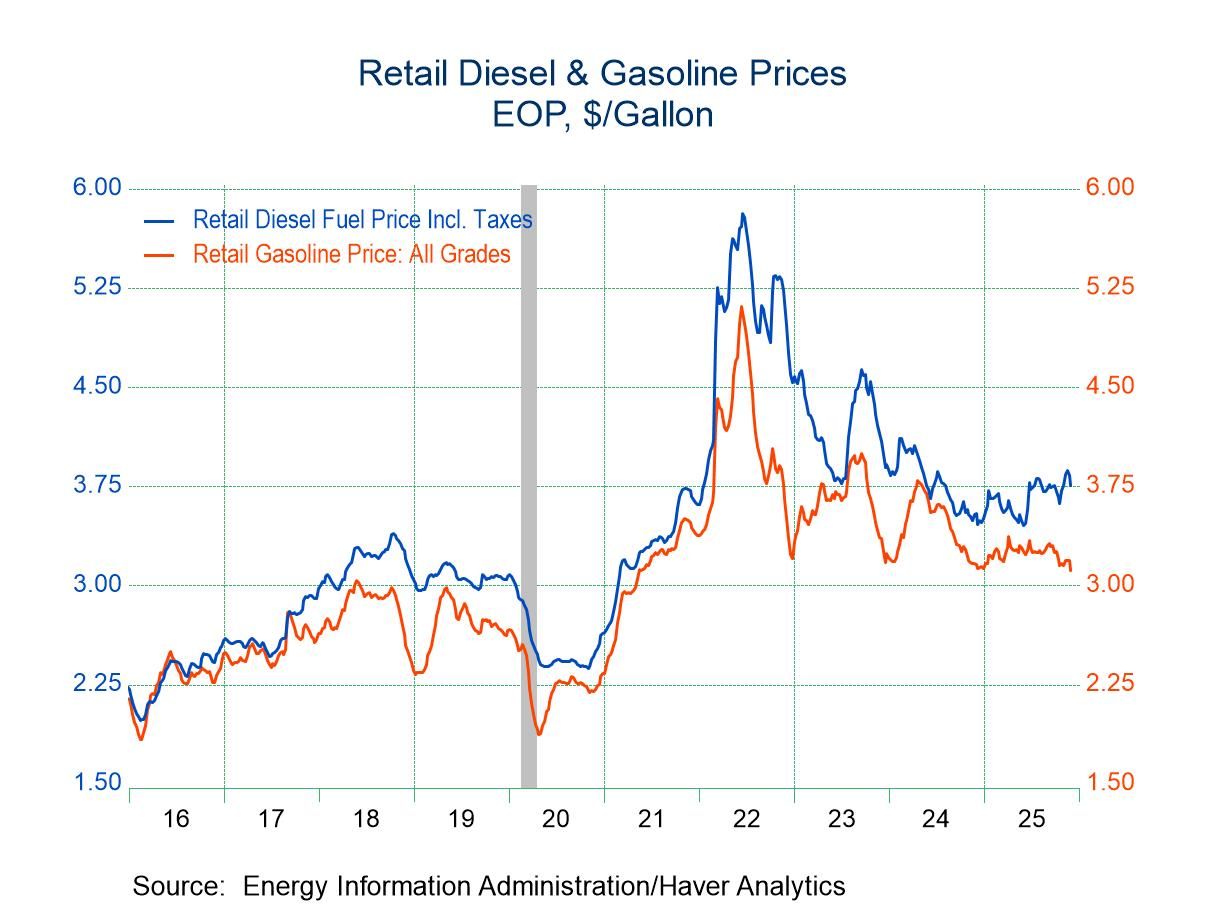 Global| Jul 14 2011
Global| Jul 14 2011U.S. Business Inventory Accumulation Continues As I/S Ratio Ticks Up
by:Tom Moeller
|in:Economy in Brief
Summary
The U.S. Commerce Department reported that business inventories rose 1.0% in May after a revised 1.0% April increase, originally reported as 0.8%. Quicker inventory accumulation raised the inventory-to-sales ratio to 1.28, up from the [...]
The U.S. Commerce Department reported that business inventories rose 1.0% in May after a revised 1.0% April increase, originally reported as 0.8%. Quicker inventory accumulation raised the inventory-to-sales ratio to 1.28, up from the low of 1.25 as business sales slipped 0.1% (11.6% y/y).
The May pickup in inventory accumulation was led by a 1.8% rise in the wholesale sector. Year-to-year strength was led by the auto (10.2%) and petroleum (36.3%) sectors. Factory inventories rose 0.8% though the I/S ratio fell.
Retail inventories rose 0.4% after the downwardly revised 0.2% April rise. A 1.0% increase (6.4% y/y) in clothing led the advance while autos rose 0.7% (10.5% y/y). Excluding autos only, inventories increased 0.3% (4.4% y/y). For general merchandise, inventories rose 0.5% (5.8% y/y) while furniture and appliance inventories fell 0.5% (+0.6% y/y).
Despite just-in-time inventory management, the overall inventory-to-sales ratio rose to 1.28. The increase was led by the retail and wholesale sectors. However, less autos the retail I/S ratio remained at its record low of 1.19. For wholesalers, the rise also reflected the auto sector as well as petroleum.
The manufacturing and trade data is in Haver's USECON database. Note that in a value-added feature, the database includes series calculated by Haver database managers showing sales, inventories and I/S ratios for total business less motor vehicle dealers and related wholesale operations.
Tom Moeller
AuthorMore in Author Profile »Prior to joining Haver Analytics in 2000, Mr. Moeller worked as the Economist at Chancellor Capital Management from 1985 to 1999. There, he developed comprehensive economic forecasts and interpreted economic data for equity and fixed income portfolio managers. Also at Chancellor, Mr. Moeller worked as an equity analyst and was responsible for researching and rating companies in the economically sensitive automobile and housing industries for investment in Chancellor’s equity portfolio. Prior to joining Chancellor, Mr. Moeller was an Economist at Citibank from 1979 to 1984. He also analyzed pricing behavior in the metals industry for the Council on Wage and Price Stability in Washington, D.C. In 1999, Mr. Moeller received the award for most accurate forecast from the Forecasters' Club of New York. From 1990 to 1992 he was President of the New York Association for Business Economists. Mr. Moeller earned an M.B.A. in Finance from Fordham University, where he graduated in 1987. He holds a Bachelor of Arts in Economics from George Washington University.


